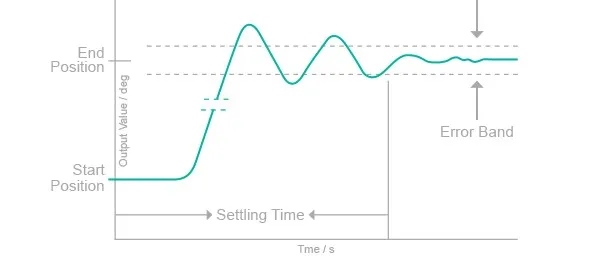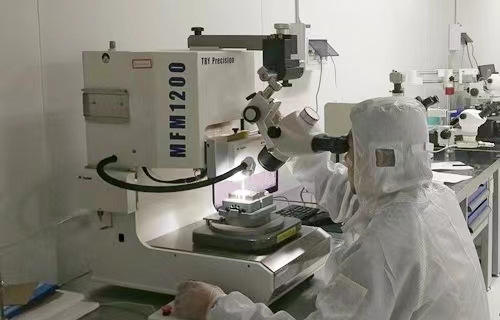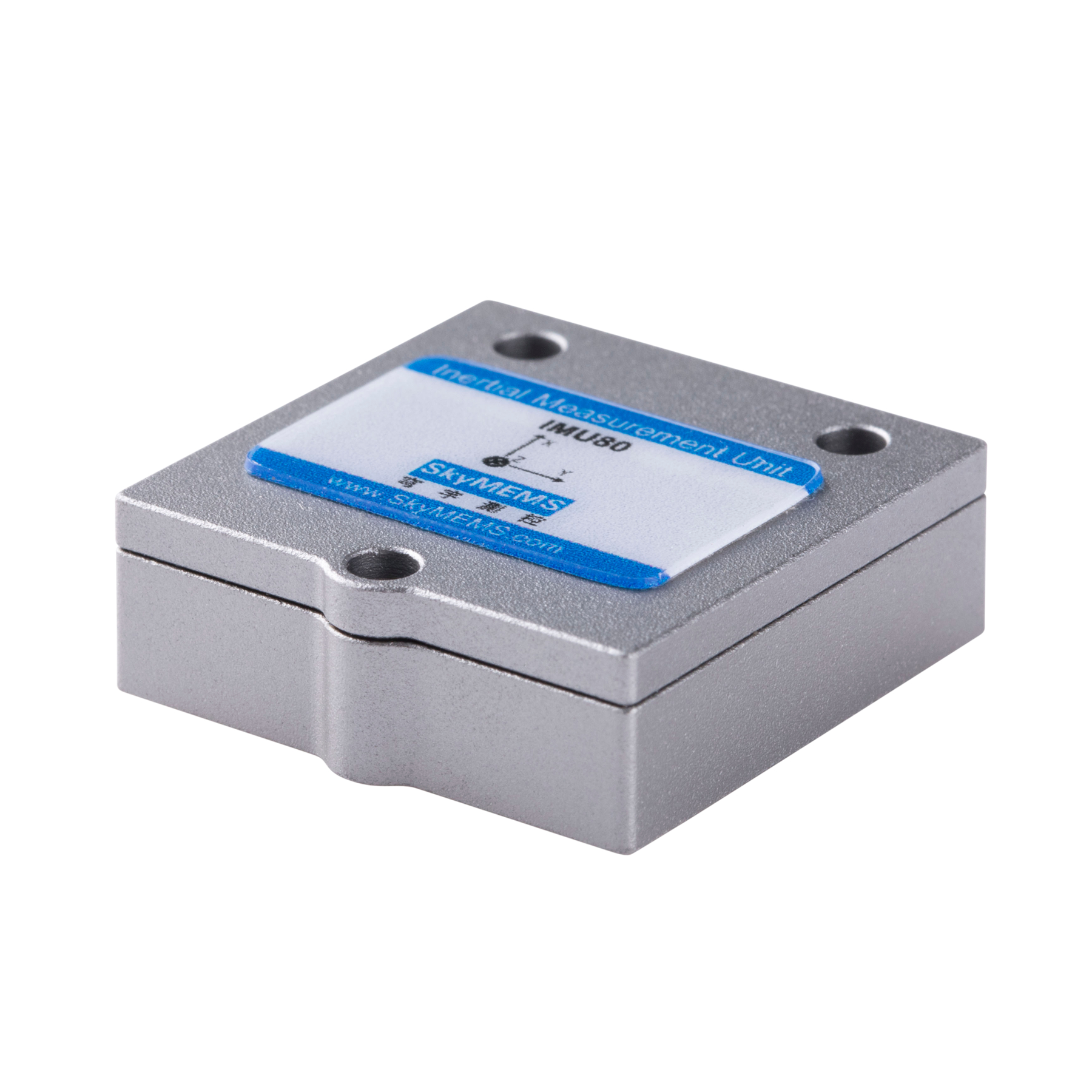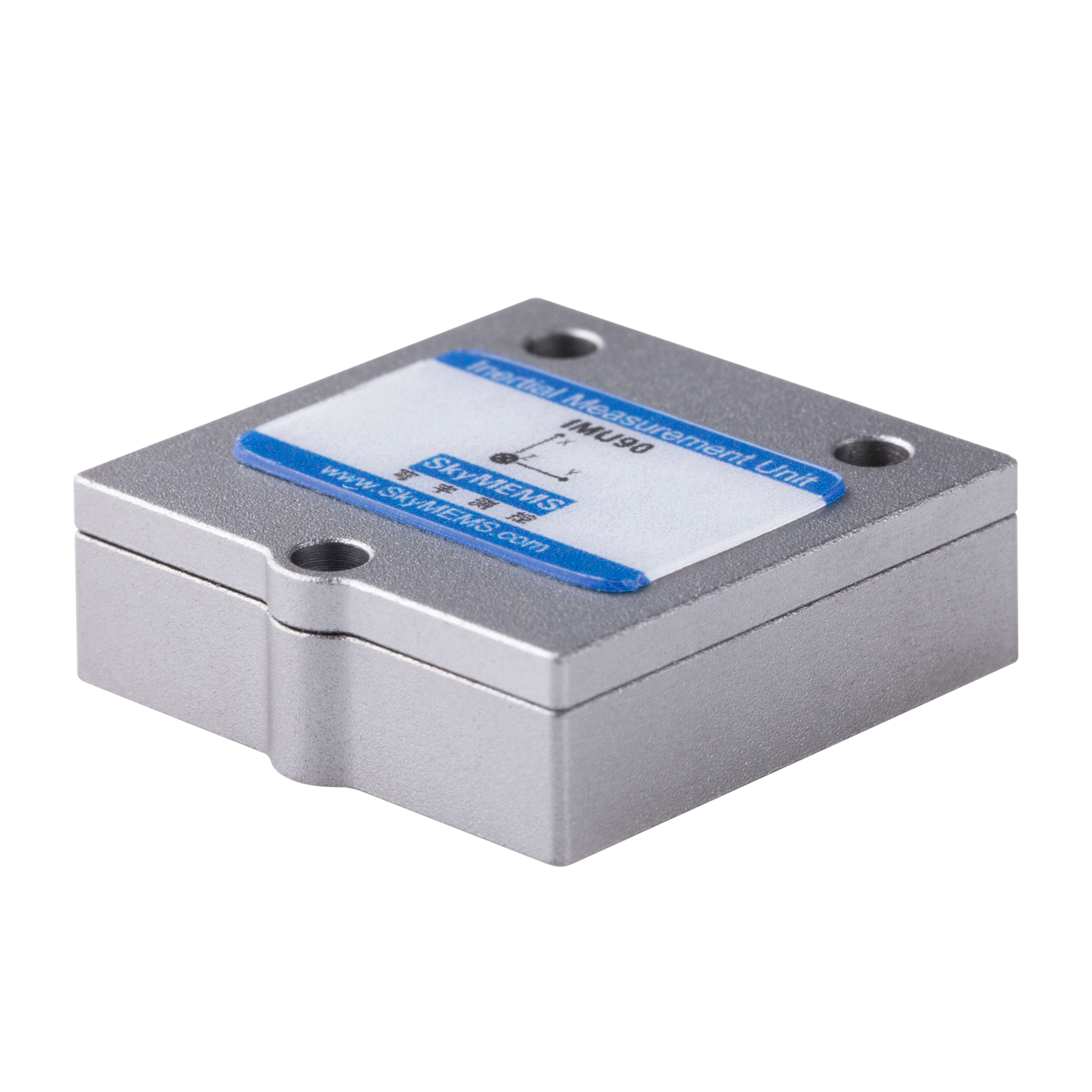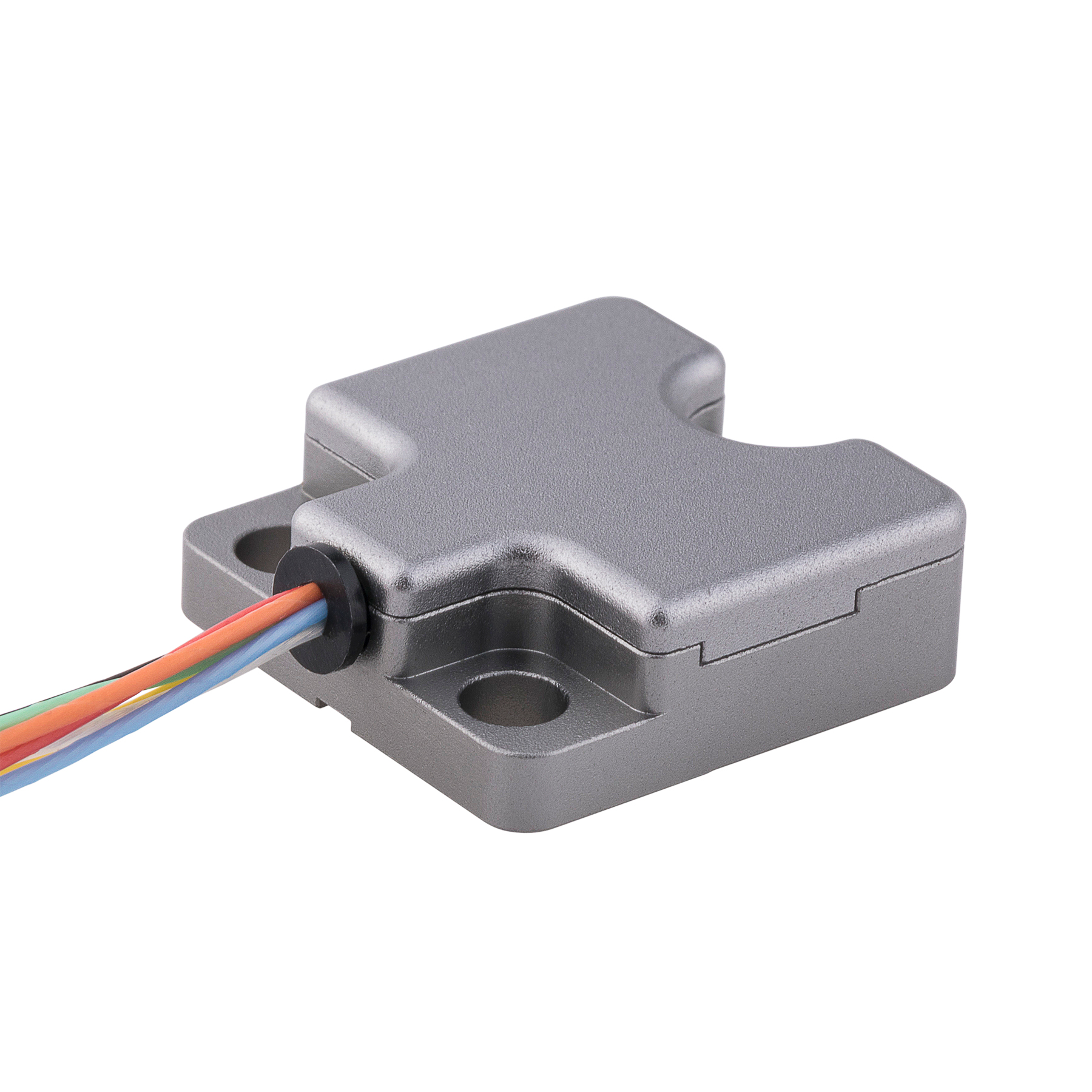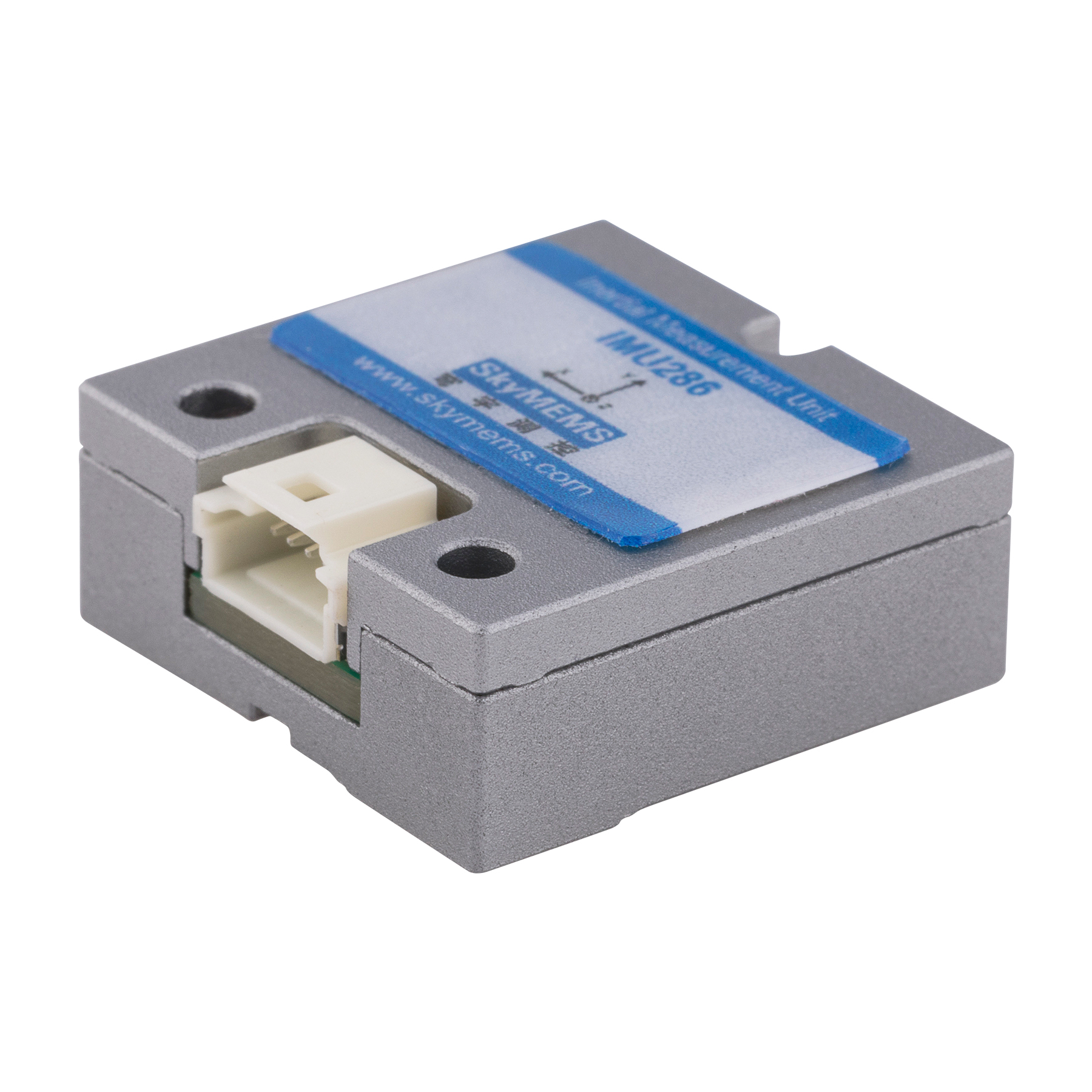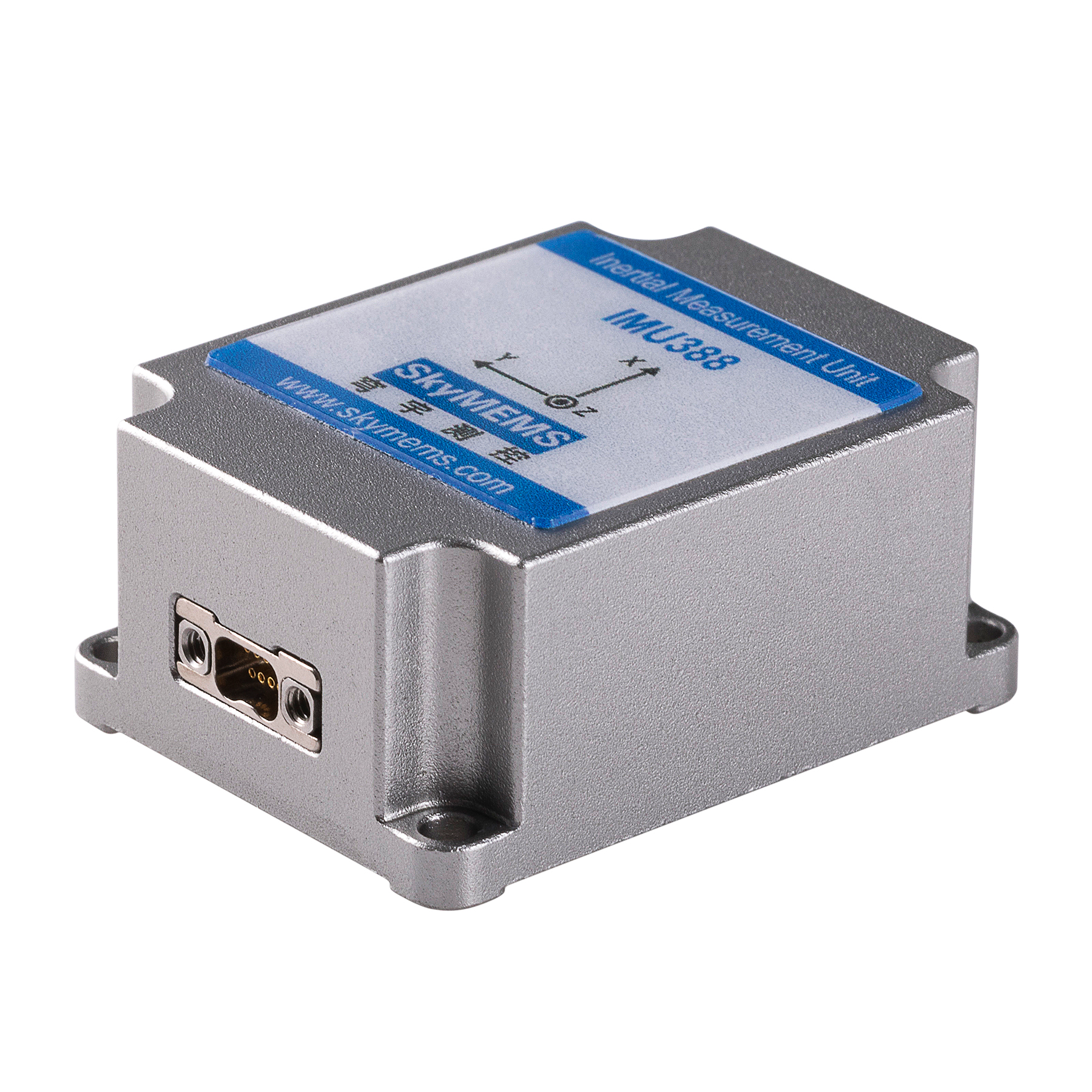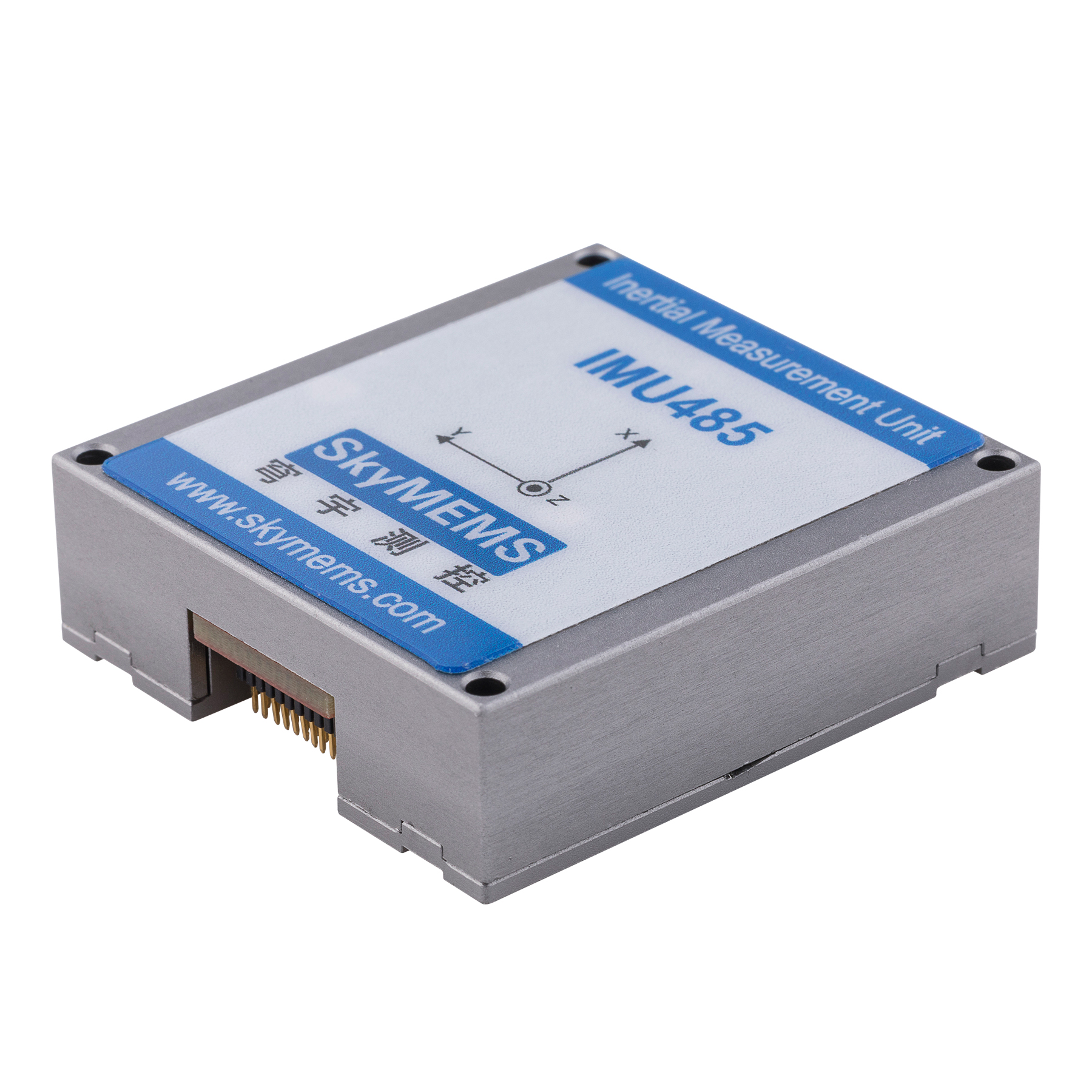Measurement Principle of MEMS Inclinometers
Inclinometers measure the orientation angle of an object with respect to the force of gravity. This is done by means of an accelerometer, which monitors the effect of gravity on a tiny mass suspended in an elastic support structure. When the device tilts, this mass will move slightly, causing a change of capacitance between the mass and the supporting structure. The tilt angle is calculated from the measured capacitances.
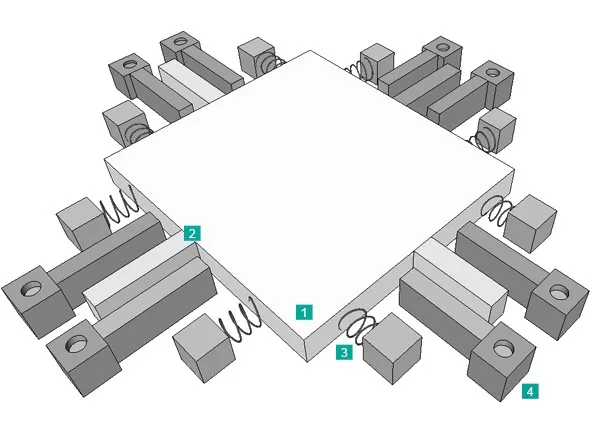
Fig. 1: Principle of a MEMS sensor
proof mass with
electrodes
springs
fixed electrodes
The function can be illustrated with a simplified model with two electrodes: one fixed, and the other (the proof mass) is movable, suspended by spring elements (see Fig. 1). When the inclinometer is in a horizontal position (Fig. 2.1), the capacitance between the electrodes is measured. If the sensor is tilted (Fig. 2.2), the movable mass and its electrode will change position relative to the fixed electrode. This resulting change of capacitance between the two electrodes is measured by the sensor cell and used to calculate the new inclination value.
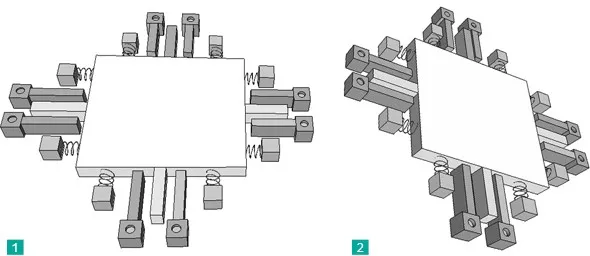
Fig. 2: Position of a MEMS sensor
MEMS sensor in horizontal position
MEMS sensor in tilted position
This working principle has been proven in many industrial and commercial applications, such as mobile phone motion sensors and car airbags. These consumer applications usually require low grade accelerometer cells which typically deliver accuracies of less than 1 degree. Unlike low consumer grade inclinometer cells, the MEMS sensors used in SkyMEMS inclinometers contain of an array of precise electrodes to improve the resolution and accuracy of the measurement.
Common Specs
Sensor cycle time: This is the internal cycle time of the base sensor. A cycle time of 5ms means that the position value is updated every 5ms.
Interface cycle time: This is the cycle time the position value is transmitted via the communication interface. In contrast to the sensor cycle time (which is a fixed value), the interface cycle time can be easily adjusted by the customer at the interface level.
Absolute accuracy: The absolute accuracy is the worst case deviation between measured position and the actual position within the defined range.
Offset: When the inclinometer is positioned at the zero level, the output will show a small deviation. This error at the zero level is referred to as offset error.
Dynamic accuracy: This accuracy is determined the same way as the absolute accuracy, only that the device is exposed to external vibrations and accelerations. The dynamic accuracy was determined during lab tests on different equipment that simulate the moving environment of mobile machines. The stated dynamic accuracy serves as reference value; we recommend evaluating the dynamic behavior on your own machine, as vibrations and shocks differ from machine to machine. Lab tests were done with the following equipment:
- Linear accelerations: The sensor is accelerated in one axis with 10 m/s² over 1s
- Vibrations: Different vibration frequencies between 1-1000 Hz with a force of 1g
Resolution: This is the smallest possible step
Hysteresis: The definition of a hysteresis is that the output value of a system is not only dependent from the actual input, but also from past inputs. For inclinometers this means that the measured tilt angle is also dependent on the past position. There will be a small difference whether the inclinometer is tilted from 0° to 10° or from 20° to 10°. This difference is described by the hysteresis.
Temperature gradient: This value describes the change of the measured tilt angle for a change in temperature. If the inclinometer is in a static position and the temperature decreases or increases, the output value will also change according to the temperature gradient.
Settling time: This is a value that describes the dynamic behavior of a system. The settling time defines the time the inclinometer signal needs to reach and stay within 5% of the final position.
